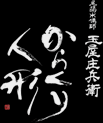The first mechanical clock is thought to have been brought to Japan by the Spanish missionary Francisco Xavier. Hoping to receive permission to preach in Japan, he presented the clock in 1551 as a gift to Ōuchi Yoshitaka (1507-1551), the daimyo of Suo (present-day Yamaguchi Prefecture). (from Ōuchi Yoshitaka's journal)
The oldest clock in existence today is a table clock presented by the Spanish king, Philip III, to Tokugawa Ieyasu in 1612. It is preserved at Kunōzan Tōshōgū shrine in Shizuoka City.
These imported mechanical clocks had a huge influence on the development of Karakuri dolls. A particularly important figure is Sukezaemon Tsuda, who used the knowledge he gained from repairing these clocks to construct the first Japanese mechanical clock.
The first mechanical clock was made by Sukezaemon Masayuki. He was a member of the Sukezaemon Tsuda family, who were employed by the Owari clan for generations as watchmakers and blacksmiths. According to records kept by the Tsuda family, Masayuki manufactured the clock in 1598. After repairing a damaged mechanical clock which Tokugawa Ieyasu had received as a present from Korea, he constructed an identical clock and offered it to the shogun. This took place 47 years after Francisco Xavier brought the first mechanical clock to Japan.
As written in the Owari-shi (a periodical from the Owari territory): “These devices are called 'automatic ringing gongs' or tokei - 'time measuring devices.' Sukezaemon Tsuda of Tokiwamachi makes these (though officially called 'automatic ringing gongs,' 'tokei' appears to be the common name). A clock which Tokugawa Ieyasu had received from Korea broke during a period when a member of the Sukezaemon family was living in Kyoto. After a search throughout the capital for an individual capable of repairing the clock, The Sukezaemon craftsman was chosen, and he agreed to go to Sunpu to repair the clock. While doing so, he constructed a second clock and gave it to the shogun. For his service, he was awarded a place in Tadayoshi's court and went to live in Kiyosushi. He came to Owari when the shogunate relocated, and now resides here as a shogun-sponsored craftsman. In the past, time was measured using water clocks, but in recent years these have been replaced by mechanical clocks imported from abroad. They are convenient devices, but no one here knew how to repair them. Not only was Sukezaemon capable of repairing them, but he also built another clock and offered it to the shogun, a considerable feat. He should be considered the father of Japanese clockmaking” (Owari-shi, Volume 1, Aichi-ken Kyōdō Shiryō Kankōkai, p. 90).
In summary, after becoming an employee of Ieyasu, he moved to Kiyosushi with Tadayoshi. His descendants were employed by the Owari clan as watchmakers, eventually becoming the clan's official watchmakers and blacksmiths. Nagoya became a hub for the watchmaking industry, a trend which continued well after the Meiji era.
In Nagoya, there is a Karakuri doll clock tower commemorating the first clock made in Japan by Sukezaemon Tsuda. It is modeled on the wadokei, or Japanese clock design. (Wakamiya Ōdōri Park, Yabachō intersection, Karakuri Doll Cock Tower - Takanashi Seima)
Creation of the Japanese clock (wadokei)
The mechanical clocks brought to Japan at the end of the Muromachi period led to the development of an original Japanese style of clock in the Edo period. Thanks to the efforts of watchmakers inspired by the work of Tsuda Sukezaemon, Japanese watchmakers were able to adapt European clock design, which calls for the dividing of time into invariant fixed intervals, to Japanese timekeeping, which calls for different time intervals depending on the season. This required the invention of a timekeeping device with two timekeeping cycles, a mechanism for switching between them, a way of changing the intervals between the characters on the clock face, and a mechanism for switching between Akemutsu (dawn) and Kuremutsu (dusk) - in short, an escapement device for adjusting speed. Japan is the only place in the world where a mechanical clock with variable timekeeping intervals was invented. In order to distinguish it from European clocks, this kind of clock is called a wadokei, or Japanese clock.
The first firearms in Japan were two rifles purchased in 1543 by the lord Tanegashima Tokitaka of Tanegashima Island (Kagoshima Prefecture) after a Portugese ship drifted ashore on the island. Tokitaka ordered his vassals to examine the rifles in hopes of discovering how they were made, thus taking the first step toward domestic production of firearms in Japan. These rifles were introduced at the height of the Warring States period, when demand for weapons was very high, and they spread throughout the country very quickly. Thanks to the fact that Japanese forging technology used in the creation of swords was already highly advanced, gun barrels were relatively easy to produce, and it was possible to mass produce these first firearms. The manufacturing of these rifles led to advances in both science and engineering in Japan, and contributed to the development of Karakuri dolls.














